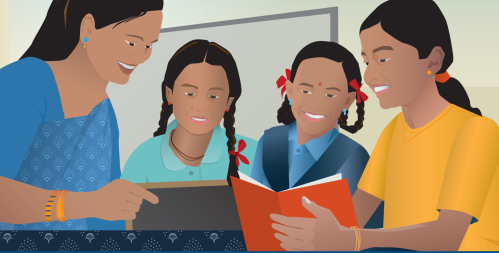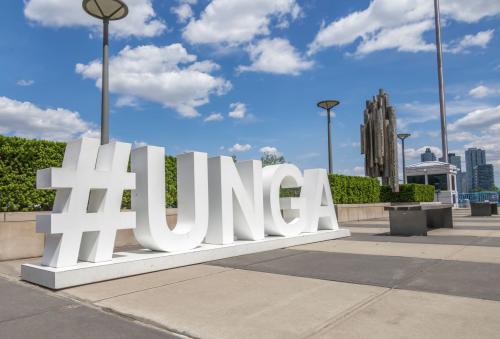Next Monday, the Center for Universal Education is hosting a series of meetings to discuss how we can make sure all children have access to a quality education. This will require first and foremost reaching those left behind—children living in poor remote rural areas or overcrowded urban slums. It will also involve ensuring a reasonable quality of learning for all children. Achieving these two tasks will require more financial resources that are better spent. As we head into the discussion, here are seven striking facts about the current state of global education financing!
- It doesn’t really cost much! Providing basic education to all children in 46 low and middle income countries would require an additional $26 billion annually—less than four percent of the US defense budget, or half the money spent on the Sochi Olympics. It costs an estimated $54 billion annually to provide basic education to all children in these countries. Current government spending amounts to about $25 billion and donor aid to an additional $3 billion annually, leaving the $26 billion gap.
- Sadly, donors are actually in the midst of deprioritizing basic education. While total overseas development assistance increased over the past three years, the amount going to education fell close to 10 percent and to basic education by over 16 percent between 2009 and 2012. Sub-Saharan African countries were hit even harder. This scarce donor aid is also often uncoordinated and inconsistent. The number of donors active in countries in greatest need varies from six in the Central African Republic to 23 in Tanzania. Aid per primary aged child varies from $7 in the Democratic Republic of Congo to $63 in Haiti. The estimated cost to provide a quality primary education in low-income countries is $131. Governments allocate on average $41 per child, while they receive $16 per child from aid donors.
- Current public spending is falling short. Only 25 percent of countries are spending what they need to deliver quality education (the recommended 6 percent of GNP). In Bangladesh, Pakistan and 23 other countries with large out-of-school populations, governments dedicate less than 3 percent of GNP to education. On the bright side, total public expenditure on education in developing countries has increased. In sub-Saharan Africa, it jumped from $12.5 billion in 1999 to $57 billion in 2011. This is largely a result of economic growth but governments have also allocated an increased share of their national income to education, from 3.8 to 4.7 percent of GNP in SSA alone. Increasing domestic spending will require increasing the share of education in overall spending but also mobilizing more resources.
- The jury is still out on new financing sources. Education has not yet been a major beneficiary of innovative financing. It received less than 2 percent of such funds generated by the World Bank between 2000 and 2008, while health received 12 percent. New proposals for innovative financing in education could help generate much needed funds and will be discussed at the meetings. It remains to be seen whether these mechanisms will be feasible in education, but one study has estimated the potential for impact investing in primary education at $10 billion during the next 5-10 years, while the potential in other parts of the education sector could be equally high if not higher.
- More equitable and needs-based distribution of resources contributes to good overall performance. Yet in some financing systems—like those in Bangladesh—one district will receive more than 10 times the funding of another, with little relation to need. Countries have vastly different models to allocate funding to districts and population groups and many exacerbate rather than fix existing inequalities, leading to worse overall education outcomes. The 2012 OECD-DAC PISA survey shows that high performing school systems tend to allocate resources more equitably across socio-economically advantaged and disadvantaged schools. Australia and Brazil, two countries featured at the Brookings meetings next week, have recently implemented targeted policies to improve the performance of low-achieving schools or students and distribute more resources to those regions and schools that need them most. In this way, they aim to reduce the variation in performance that can be attributed to socio-economic status.
- In some countries education spending is particularly effective, underscoring the importance of how money is spent. Poland, another country featured at the meetings, spends 20% less than the OECD average per pupil but ranks in the top 15 on international (PISA) learning assessments. Poland spends $5,056 per pupil while its high-income peers spend $6,353 on average. Despite this below-average spending, Poland achieves above-average learning outcomes.
- The cost of weak governance and accountability is high. Misappropriated education funds in Nigeria and Kenya alone could have put an additional 150,000 children in primary school. This year’s Global Corruption Report on education highlights huge financial losses due to misappropriation in education, amounting to $10.5 million per year in Nigeria and $8.5 million in Kenya. Lack of accountability also results in teacher absenteeism, which can be as high as 30 percent in some countries. Weak governance in education most affects the poor and disadvantaged who are less able to bear the hidden costs. Transparency and accountability around public spending can help draw attention to missing or ineffectively spent funds and are associated with better student outcomes. Unfortunately, there is a shocking lack of information on financial flows to education. Only a handful of countries have full information on their education spending. This is in stark contrast to the health sector where National Health Accounts have been institutionalized to track health spending in more than 180 countries.
We hope you will join us next week for what promises to be a lively discussion, either in person or through our live webcast.



Commentary
Seven Facts about Global Education Financing
February 20, 2014